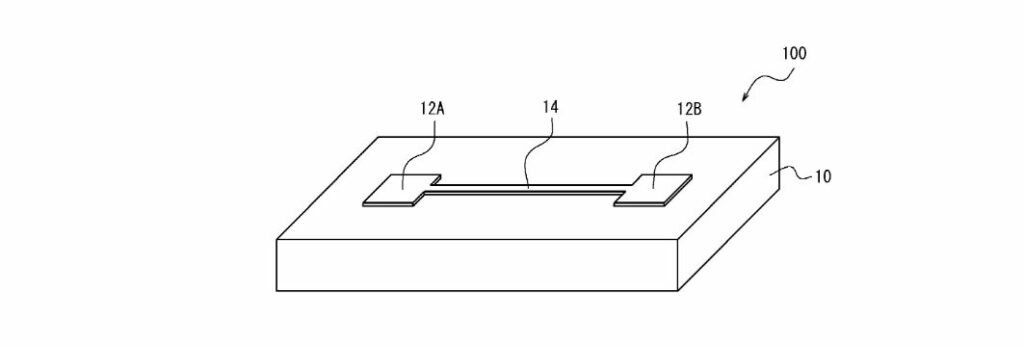A recent Japan Science and Technology Agency patent introduces an advanced hydrogen gas sensor designed to enhance detection sensitivity, response times, and power efficiency.
Structural Components
The hydrogen gas sensor outlined in the patent is built on a substrate with an insulating surface. It features two pad electrodes, the first and second pad electrodes, fabricated on the substrate’s insulating surface and interconnected by a nanowire.
Nanowire Specifications
The nanowire is a standout component of this sensor, designed with a line width of 50-150 nanometers (nm) and a 10-60 nm thickness. What makes this nanowire particularly special is its composition: it is made of a hydrogen storage metal. This choice of material is critical for the sensor’s ability to detect high-sensitivity hydrogen gas.
Detection Mechanism
The operational efficacy of the hydrogen gas sensor boils down to its detection mechanism. The sensor activates a current flow between the first and second pad electrodes when hydrogen gas is present. It then detects hydrogen gas by monitoring changes in the electrical signal between these electrodes. These fluctuations in the electrical signal signify the presence of hydrogen, allowing for real-time detection.
Benefits and Applications
High Sensitivity: Thanks to the nanowire and its hydrogen storage metal composition, the sensor is highly sensitive to detecting even minute hydrogen concentrations.
Excellent Response and Recovery Characteristics: The sensor’s design ensures that it responds quickly to hydrogen presence and recovers speedily, making it ideal for continuous monitoring.
Low Power Consumption: An essential feature for practical applications, the sensor’s low power requirement broadens its usability in various industrial and residential settings.
Future Prospects
This hydrogen gas sensor holds significant promise for industries where hydrogen is both a critical resource and a potential hazard. The ability to monitor hydrogen levels accurately and efficiently can make hydrogen-powered technologies safer and more reliable. This sensor can be a cornerstone technology for hydrogen fuel systems, increasing their safety and effectiveness.





